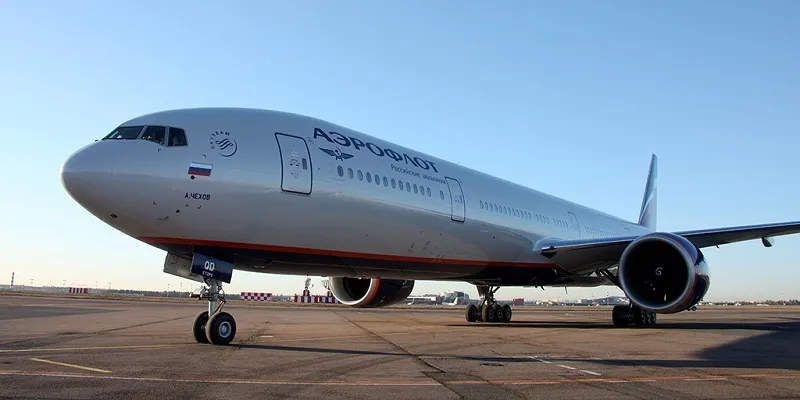
Broken bones as Aeroflot 777 hits turbulence
May 01, 2017

Passengers aboard an Aeroflot Boeing 777 experienced a harrowing episode of turbulence that led to several injuries, including broken bones. The aircraft encountered unexpected severe turbulence during its flight, causing sudden jolts that threw some travelers against the cabin interior. Emergency responders met the plane upon its arrival, providing immediate medical assistance to those injured. Witnesses reported scenes of chaos as overhead bins opened and personal items scattered throughout the cabin. The incident has raised concerns about turbulence safety and the importance of wearing seatbelts at all times during flights, even when the seatbelt sign is off.
When it comes to air travel, turbulence is one of the most common occurrences that passengers experience. While most turbulence is harmless, there are instances where it can lead to serious injuries. Recently, an Aeroflot Boeing 777 encountered severe turbulence, resulting in multiple passengers suffering from broken bones. In this article, we will explore the implications of such incidents, the safety measures in place, and how to prepare for turbulence when flying.
The Incident: Aeroflot 777 Turbulence
On a recent flight, an Aeroflot 777 hit unexpected turbulence, causing panic among passengers. Reports indicated that several individuals were thrown from their seats, leading to injuries, including broken bones. This incident highlights the importance of understanding turbulence and its potential risks. Turbulence can occur due to various factors, including weather conditions, air currents, and changes in altitude.
Understanding Turbulence
Turbulence is a sudden change in airflow that can cause an aircraft to move erratically. It can be classified into different categories, including:
| Type of Turbulence | Description |
|---|---|
| Clear Air Turbulence (CAT) | Occurs at high altitudes in clear skies, often unpredictable. |
| Thermal Turbulence | Caused by rising warm air, commonly experienced during hot days. |
| Mechanical Turbulence | Results from obstacles like mountains and buildings disrupting airflow. |
Each type of turbulence can vary in intensity, and while most flights experience mild turbulence, severe turbulence can lead to injuries, especially if passengers are not wearing seatbelts. It’s crucial for travelers to be prepared and understand the risks involved.
Injuries from Turbulence: The Risks
In the case of the Aeroflot 777 incident, passengers reported injuries ranging from minor bruises to severe cases, including broken bones. Here are some common injuries associated with turbulence:
- Broken Bones: Often occur when passengers are thrown against hard surfaces.
- Soft Tissue Injuries: Includes sprains, strains, and bruises.
- Head Injuries: Can happen if a passenger hits their head during sudden movements.
It’s important to note that such injuries can be exacerbated by not following safety guidelines, like remaining seated with seatbelts fastened when the seatbelt sign is illuminated.
Safety Measures and Precautions
Airlines, including Aeroflot, take numerous safety measures to mitigate the risks associated with turbulence. These measures include:
- Pre-Flight Weather Assessments: Pilots receive updates regarding weather conditions and potential turbulence.
- In-Flight Monitoring: Crew members are trained to monitor turbulence and advise passengers accordingly.
- Seatbelt Regulations: Passengers are encouraged to keep their seatbelts fastened at all times.
Despite these precautions, turbulence remains unpredictable. Therefore, it is essential for travelers to be proactive in their safety measures.
How to Prepare for Turbulence
For passengers, preparing for turbulence can significantly reduce the risk of injury. Here are some tips:
- Always Wear Your Seatbelt: Even when the seatbelt sign is off, keeping your seatbelt fastened is wise.
- Stay Informed: Pay attention to safety briefings and announcements from the flight crew.
- Avoid Moving Around: Limit movement in the cabin, especially during turbulent conditions.
By following these guidelines, passengers can help ensure their safety during turbulent flights.
Conclusion
The recent incident involving the Aeroflot 777 serves as a stark reminder of the potential dangers associated with turbulence. While the majority of flights experience only mild turbulence, severe cases can lead to serious injuries, including broken bones. Understanding the nature of turbulence, adhering to safety measures, and preparing adequately can significantly enhance passenger safety. Always remember that while turbulence can be unsettling, being informed and cautious can make a substantial difference in ensuring a safe journey.
For further information regarding air travel safety and tips on how to handle turbulence, consider visiting reputable aviation safety websites or consulting with travel experts. Your safety is paramount, and being prepared is the best way to ensure a smooth flying experience.
Related Articles

Explore Thailand: The Best Islands to Visit for Paradise, Adventure, and Relaxation

The Ultimate Guide to the Best Islands in Thailand for Your Next Getaway

Do babies need passports? How to get a passport for a newborn

How to get a U.S. passport fast: here’s how to expedite the process

What is Mobile Passport Control: 5 reasons why you should use it

SENTRI vs. Global Entry: A detailed guide

Do you need a passport to go to the Bahamas? Let’s find out

Do you need a passport to go to Mexico? A detailed guide

Do you need a passport to go to Canada? We got the answer

Do You Need a Passport for a Cruise: An Essential Travel Guide

Booster Seat Requirements: All the Rules to Follow in Your Rental Car

What Are the World’s Most Powerful Passports, and How Does Yours Rank?

How to Take a Passport Photo at Home: A Helpful Guide

You've got to have heart! Southwest's new livery

Your opinion: Should water be free on low cost carriers?

Young women bolder than guys as solo travellers
